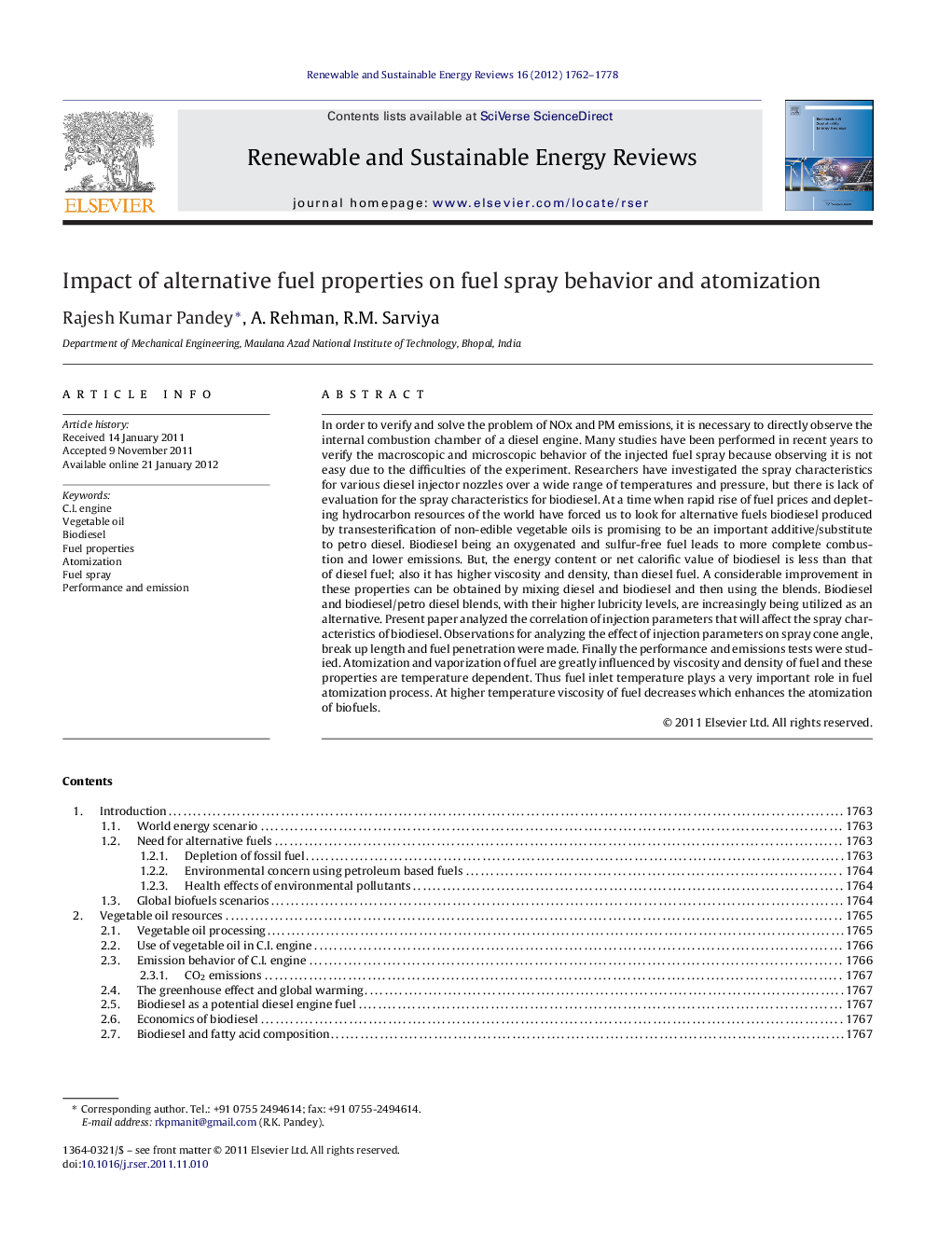| Article ID | Journal | Published Year | Pages | File Type |
|---|---|---|---|---|
| 1751110 | Renewable and Sustainable Energy Reviews | 2012 | 17 Pages |
In order to verify and solve the problem of NOx and PM emissions, it is necessary to directly observe the internal combustion chamber of a diesel engine. Many studies have been performed in recent years to verify the macroscopic and microscopic behavior of the injected fuel spray because observing it is not easy due to the difficulties of the experiment. Researchers have investigated the spray characteristics for various diesel injector nozzles over a wide range of temperatures and pressure, but there is lack of evaluation for the spray characteristics for biodiesel. At a time when rapid rise of fuel prices and depleting hydrocarbon resources of the world have forced us to look for alternative fuels biodiesel produced by transesterification of non-edible vegetable oils is promising to be an important additive/substitute to petro diesel. Biodiesel being an oxygenated and sulfur-free fuel leads to more complete combustion and lower emissions. But, the energy content or net calorific value of biodiesel is less than that of diesel fuel; also it has higher viscosity and density, than diesel fuel. A considerable improvement in these properties can be obtained by mixing diesel and biodiesel and then using the blends. Biodiesel and biodiesel/petro diesel blends, with their higher lubricity levels, are increasingly being utilized as an alternative. Present paper analyzed the correlation of injection parameters that will affect the spray characteristics of biodiesel. Observations for analyzing the effect of injection parameters on spray cone angle, break up length and fuel penetration were made. Finally the performance and emissions tests were studied. Atomization and vaporization of fuel are greatly influenced by viscosity and density of fuel and these properties are temperature dependent. Thus fuel inlet temperature plays a very important role in fuel atomization process. At higher temperature viscosity of fuel decreases which enhances the atomization of biofuels.
